Atlanta sends RHP Shae Simmons and OF Mallex Smith to Seattle for LHP Luiz Gohara and LHP Thomas Burrows
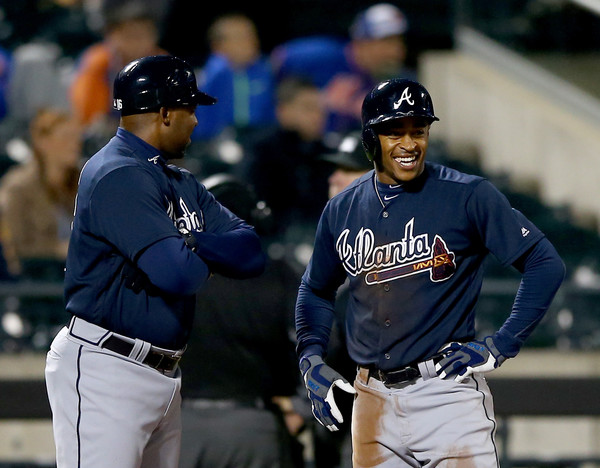
Last week, in Braves Debates #1, I talked about how difficult it would be for players like Caleb Dirks and Lucas Sims to find bullpen roles because of how loaded the roster is with right-handed pitchers. I also noted that a lefty prospect like A.J. Minter could have a quicker path, because Atlanta lacked depth among southpaw relievers. Braves GM John Coppolella noticed these things as well, trading from his depth of right-handed relief pitching (and outfield speed) to improve his left-handed depth, while adding a significant prospect in the meantime.
Outgoing
Mallex Smith was pretty useful OF for Atlanta last year, at least when he was healthy. Smith’s glove was his calling card, where he was competent in CF and phenomenal in LF, using his 80-grade speed to make up for his occasionally inefficient route-taking. While Smith’s bat was below-average, and likely to remain there, it wasn’t so bad that he was unplayable. While a .238/.316/.365 line isn’t anything to get excited over, and his 16/24 stolen base success rate was pretty underwhelming for his speed, there was enough there to make Smith a useful asset. He became slightly less useful when Atlanta signed Ender Inciarte to an extension. While Smith could win Gold Gloves in LF, he doesn’t hit well enough to justify playing him regularly there, and if CF isn’t an option, he’s really just going to be an excellent 4th OF/pinch-runner/defensive substitution. Atlanta isn’t quite to the point, competitively, to justify holding onto a luxury item like a top-notch bench player when another team is offering longer-term value for him. Still, he’ll be missed. Small, speedy guys are easy fan favorites, because they’re fun to watch. People named “Mallex” are fan favorites too, because that’s fun to say. It’s hard to say goodbye to both the name and the game.
When Shae Simmons debuted, there was talk of him being Kimbrel-Lite, and it’s easy to see why. He’s under 6 feet tall, like Kimbrel. He throws hard, like Kimbrel, but not as hard. While Kimbrel’s kill pitch is a slurvy curveball, Simmons has a pretty normal slider, and it isn’t nearly as devastating. Of course, “not as good as Kimbrel” really applies to almost every reliever in the sport, so it isn’t fair to Simmons. If he can not only stay healthy but hold onto his command post-TJ surgery (the surgery negated his 2015 season), Simmons can be an 8th inning guy for the Mariners, or maybe even a closer. There’s value there, but again, it was from a point of depth for Atlanta, who has more hard-throwing righty relievers than I can name. He’ll be missed, but trades like this are why the team accumulated so much pitching talent to begin with. Teams overpay for present-time relief pitching, and it’s nice to take advantage of that from time to time.
Incoming
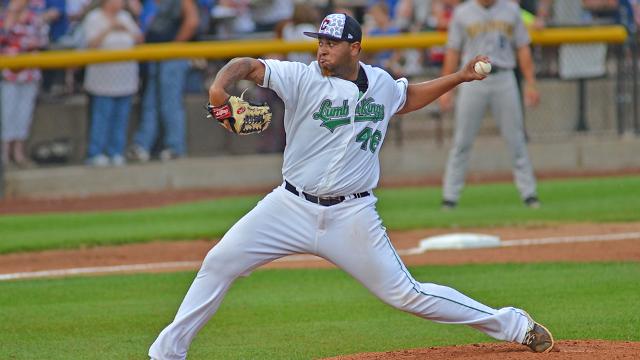
I keep up with minor league prospects around MLB more than casual fans, I’d imagine, but I don’t profess to have a deep knowledge of every system. I know which systems are pretty barren (it’s always the Angels), and I know which ones are deep (Rockies, Yankees, Braves), but there are few systems I can name more than one or two prospects in. On this website, Andy Harris is your go-to guy for all things prospects, and he’ll have some more detailed looks at both players coming over. I say all this to provide some context for my next sentence: I have been aware of Luiz Gohara for over 4 years. It started when I read Baseball Prospectus’ top 10 Mariners prospects for 2013, published in December of 2012. Gohara ranked 7th, as a 16 year old, and BP’s Jason Parks had the following to say:
Based on the opinion of five sources, Gohara was not only included on this list, but was praised at such a level that he should probably rank even higher. Despite the limited looks, the 16-year-old looks like a monster in the making, with loud stuff from the left-side delivered from a big body with feel. Do you like that profile? Gohara is advanced enough to start the season in extended spring training before moving to the college-heavy Northwest League before turning 17 years old, which should shine a very bright spotlight on the young Brazilian arm. He could be special.
The development was, at times, a bit rocky, but not discouraging. In his first low-A action, Gohara posted an 8.20 ERA (0-6 record) over 11 starts in 2014. However, he was beyond rookie ball at an age when Americans would be playing their Junior or Senior year of HS. 2015 saw more surface struggles (6.20 ERA, 5.37 BB/9) at the same level, but again, he turned 19 midway through the year. Seattle’s patience began to pay off in 2016, when Gohara, at both the same low-A ball and class A Clinton, made 13 starts, pitching 69.2 innings, striking out 81 (10.5 per 9), walking 23, and sporting a 1.81 ERA. The “monster in the making” that Parks wrote about in 2012 finally emerged, slightly, in 2016.
Of course, the emergence was only slight, over 70 innings at a level where he’s still young, but not so emphatically young you just don’t worry about anything else. Gohara’s fastball gives no cause for concern, but scouts have concerns about his other pitches, and they suggest his in-game focus doesn’t help, as command can disappear and mechanics get sloppy. But again, he’s 20. Just as I’d warn against assuming he’ll be great, don’t assume these aspects of his game can’t or won’t improve. He’s a prospect, you know? This is the territory. I do think that, even if it doesn’t all come together as a starter, Gohara has legitimate late-inning stuff. There’s a very realistic possible future where he is Atlanta’s best lefty reliever.
However you feel about his issues, it’s hard to deny that Atlanta got a potential difference-making talent in Gohara. His raw arm talent isn’t easy to find, and there are probably multiple systems without an arm as talented as his. Now it’s just about his continued education as to how to be a pitcher. 2016 makes me hopeful that he’s on the right track, but I expect him to move rather slowly. Gohara is yet another electric arm for Braves fans to be aware of, and he’s a reason to go to whichever local minor league park he’s appearing at. It’s a great addition, especially for this Braves writer who has been casually following Gohara since he signed.
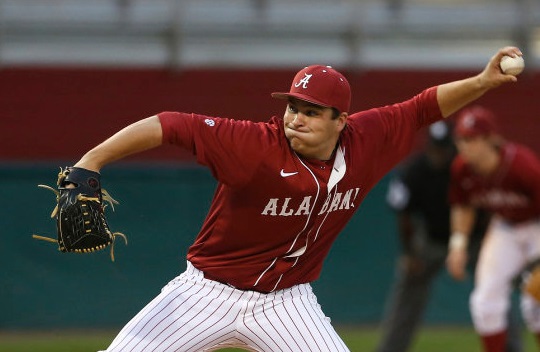
After a pretty successful run as the closer at the University of Alabama, lefty Thomas Burrows was picked 117th overall in the 2016 draft. Seattle placed him in low-A ball, where he remained a reliever. Low-A is seen by some as a step down from SEC play, which could explain why Burrows, despite worrying scouts with a drop in velocity, dominated A-ball hitters with a 2.55 ERA, whiffing one out of every three batters who stepped to the plate. It could have simply been the workload causing the velocity inconsistencies, and that’s the only big concern with him. His isn’t the profile of a difference-making, star prospect, but he could be a useful middle reliever, and if he can reach that point, he’ll have a nice, long career being left-handed. There’s a good chance we never see him in Atlanta, but there’s also a good chance he’s good enough to save us from having to offer a spring training invite to whatever Eric O’Flaherty-type we’re infatuated with in 2019 (presumably, still Eric O’Flaherty).
Summary
Atlanta traded outfield and righty relief depth for something they lacked – LHP depth, and picked up a really nice prospect in the process. Hard to hate that, even if we did like seeing Mallex Smith scamper in multiple directions to track down fly balls.

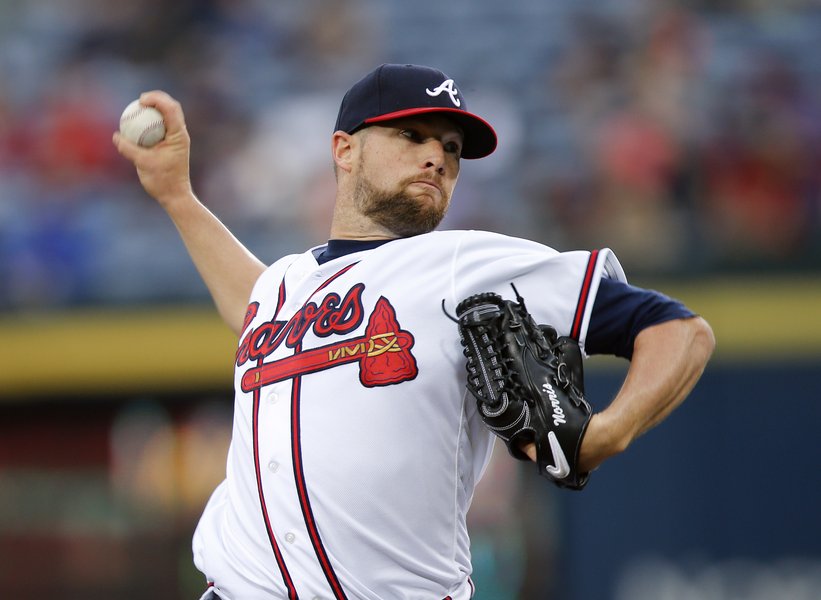

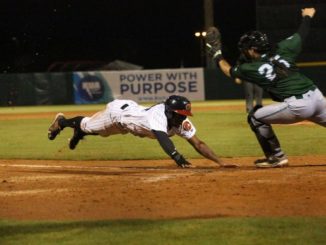
Atlanta doesn’t lack LHP depth